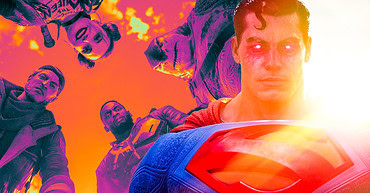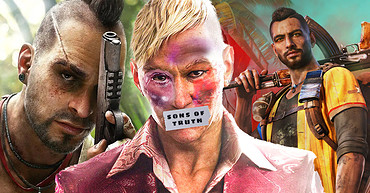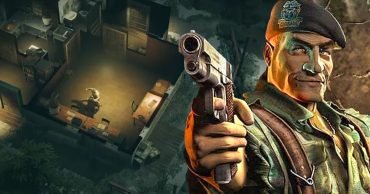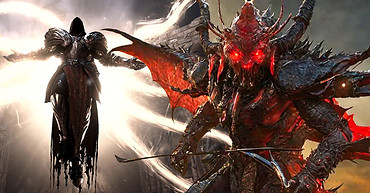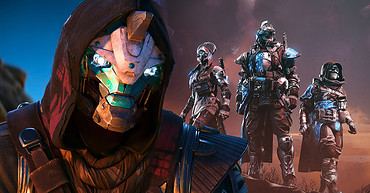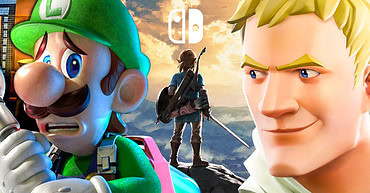The Borderlands franchise is overwhelmingly successful and has racked up major sales since its inception. The franchise began with the release of the first game, Borderlands, in 2009. The concept for the game was developed by Gearbox Software, an independent video game developer based in Texas, USA. Randy Pitchford, Brian Martel, Stephen Bahl, Landon Montgomery, and Rob Heironimus came together to establish the company in 1999.
Gearbox had previously worked on lauded titles like the Brothers in Arms series and the Half-Life expansion packs. Through these projects, Gearbox earned its place as a reputable developer in the gaming industry. The time when the Borderlands franchise rolled out its first installment was also when everything took a huge turn for both Gearbox and the gaming industry as a whole. Like many gaming aficionados, the question of how the franchise attained such widespread acclaim is intriguing. But there’s more to uncover, so keep reading.
Over-the-Top Characters Are as Unforgettable as They Get

The best-selling franchise isn’t without its over-the-top characters, who undeniably make their presence felt. The iconic figure with fiery red hair and unmistakable siren markings that you recognize instantly. Lilith is a protagonist and one of the original vault hunters who embeds herself in your imagination. Her siren abilities let her reposition strategically and deal with devastating melee attacks, while her skills enhance elemental damage and survivability. Still, it’s her voice, expertly portrayed by the talented Colleen Clinkenbeard, that breathes soul into her character.
Maya is just as bewitching as Lilith, but she is the opposite: she has blue hair, and her skills are focused on elemental damage and crowd control. While they executed the concept of “women can lead” well, there are also male protagonists who are just as iconic. Mordecai is a skilled marksman and former Vault Hunter. Known not only for his valor on the battlefield but also for his loyalty and the deep bond he shares with his pet Bloodwing.
Brick is another original Vault Hunter in the Borderlands series, known for his brute strength and proficiency in close-quarters combat. Brick is not only fighting against various enemies but also confronting his own inner demons and past traumas. True to his name, Handsome Jack is just as handsome, with chiseled features and a confident aura. His appearance may deceive, hiding his ruthless and sinister nature. They are just a few of the characters that have made the game franchise what it is today.
The Borderlands Signature Comic Book-Like Aesthetics Has Aged Well

Borderlands holds onto its iconic comic book-inspired visuals, standing the test of time even after decades. The graphical presentation in the first release paled in comparison to later entries. There may have been technological limitations at the time, but Borderlands astounded with its bold outlines, vibrant colors, and hyperbolic character designs. Borderlands 2 notably raised the visual bar for the series. Greater fidelity and detail were applied to rendering characters, environments, and effects. Thus, the game presents crisper textures, smoother animations, and upgraded lighting.
The game’s world was full of life and detail, with different landscapes like empty deserts and bustling cities. However, it wasn’t until the release of Borderlands 3 in 2019 that the series truly went beyond the norm of its graphical potential. They capitalize on technological strides, and Borderlands 3 debuted with a graphics engine that matches the caliber of current gaming norms. Besides the environment, character models were more splendid and customizable. Borderlands set the stage, but later Borderlands titles for sure stole the show.
The same applies to all the other spin-offs. Despite it all, they managed to maintain their trademark graphical style for the franchise. But gamers come from all walks of life, and not all can fully appreciate it in the same way. Some players relish the sensation of being completely absorbed in more realistic game environment graphics. Even with the avalanche of lifelike-style game releases today, Borderlands still stands tall in the gaming industry.
You Name It, the Borderlands Franchise Has the Gameplay for It

The Borderlands team sought to stand apart from typical shooters, and they achieved exactly that. The core gameplay of the Borderlands series revolves around shooting mechanics. Other games had experimented with procedural generation to some extent, but Borderlands was one of the first to implement it on such a large scale, specifically for weapons in a shooter game. This meant that no two weapons were exactly alike, with different stats, attributes, and special effects. Some entries in the series feature vehicle combat segments that some may find clunky or imprecise, particularly in the first installment. However, as the series progressed, developers refined and improved the vehicle combat experience in later entries.
The franchise also adopts RPG elements such as character progression, skill trees, and loot gathering. Skill trees and character customization weren’t entirely new concepts, especially in the RPG genre. But Borderlands executed it well with such a deep and diverse skill tree system. Users can tweak their characters by selecting from a variety of abilities and gear to fit their playstyle. The franchise also carried out the integration of co-op multiplayer in a way that felt seamless and integral to the experience. The game’s drop-in, drop-out multiplayer, and fair loot distribution made teaming up with friends or joining random groups slick for players.
Borderlands also dynamically scaled the difficulty of enemies and loot drops based on the number of players in a cooperative session. Dynamic scaling of difficulty is a game design technique where the challenge level of the game adjusts in real-time based on the player’s performance, skill level, or other factors. For instance, if you consistently perform well, the game may increase the number or difficulty of enemies, while if you struggle, the game may reduce enemy aggression or provide additional resources or power-ups. That’s just a glimpse of what Borderlands has in store, and you’re slated to uncover the rest.
The Storyline of the Borderlands Franchise Is Always Well-Paced and Richly Developed

Each entry in the series presents a rare gem, with the storyline consistently standing out among them. Themes of greed, survival, and the search for meaning in a lawless universe are commonly explored throughout the series. The original game laid the groundwork on the desert world of Pandora, where the Vault Hunters seek an ancient alien vault rumored to contain advanced alien technology and vast riches. You will select from a quartet of playable characters (Roland, Lilith, Mordecai, or Brick) and fight your way through hostile environments, battling bandits, creatures, and corporate mercenaries.
Fast forward to five years later, Borderlands 2 reveals a new villain: Handsome Jack, the charismatic and ruthless CEO of the Hyperion Corporation. Jack strives to exploit the power of a new Vault on Pandora and to eliminate any opposition, including the original Vault Hunters and the Crimson Raiders resistance group led by Roland and Lilith. You command a newly assembled squad of Vault Hunters, including Axton, Maya, Salvador, and Zer0, as they work to stop Jack’s plans and save Pandora.
Borderlands 3 drops new Vault Hunters tasked with stopping the Calypso Twins, Tyreen and Troy, who seek to unite bandit clans and exploit the Vaults’ power for their own gain. Choose your protagonist from a lineup of four new Vault Hunters: Moze, Amara, FL4K, and Zane. Borderlands has plenty of expansions and DLC packs with new stories, so there’s more for you to discover in the rest of the game. That wraps up our exploration of why the franchise is such a hit. To delve deeper into potential future successes, read here for the upcoming release date and trailer for GTA 6.
 Follow Us
Follow Us
